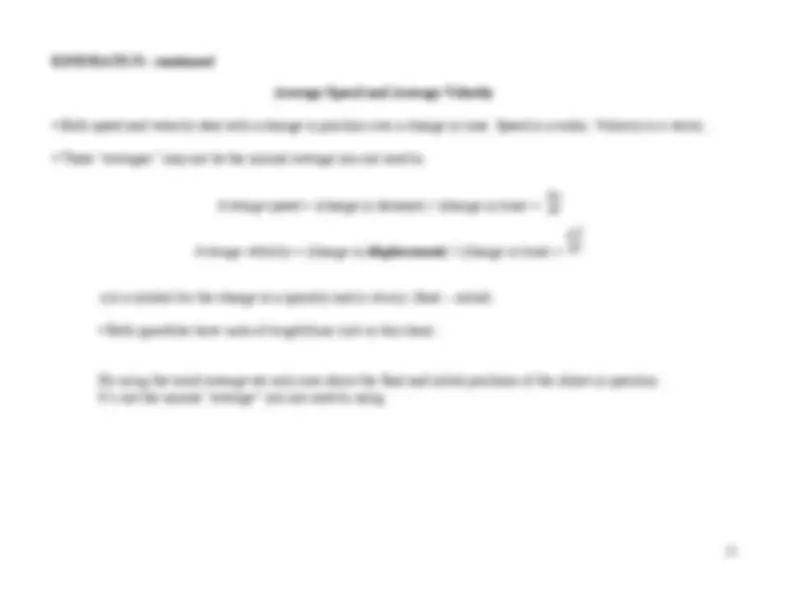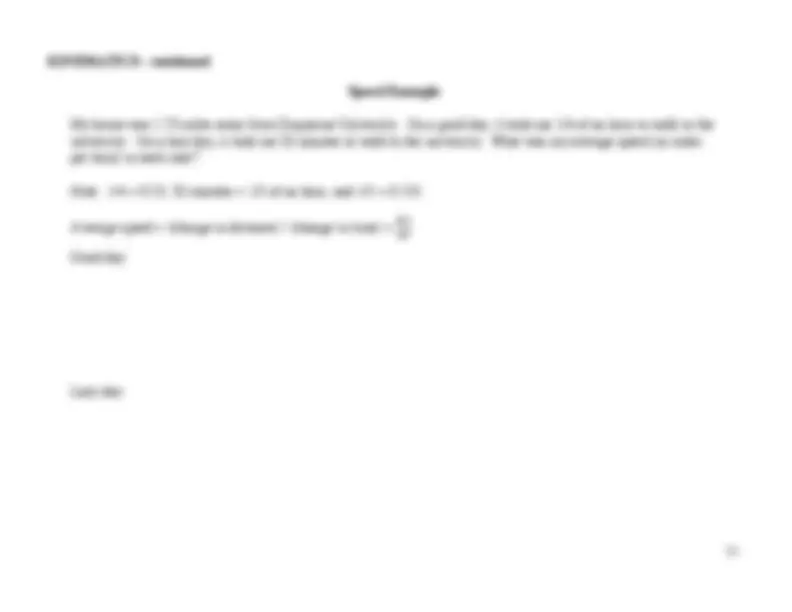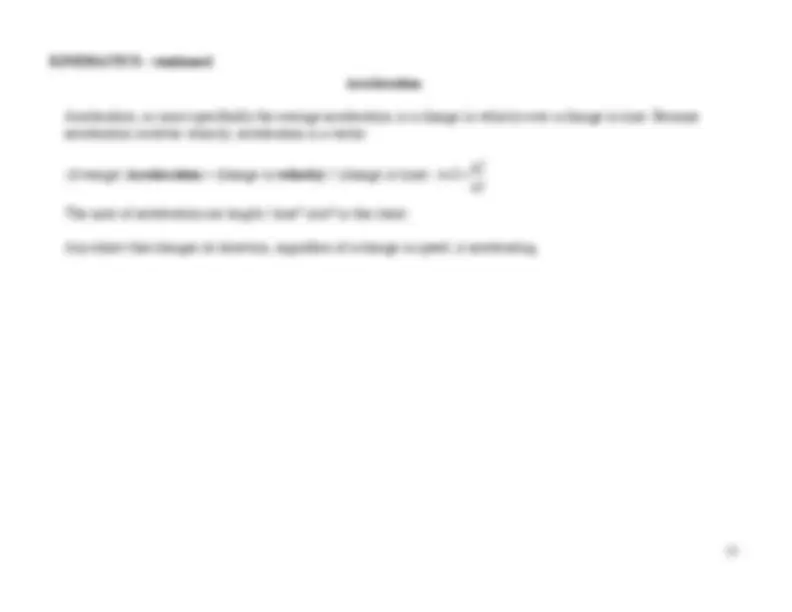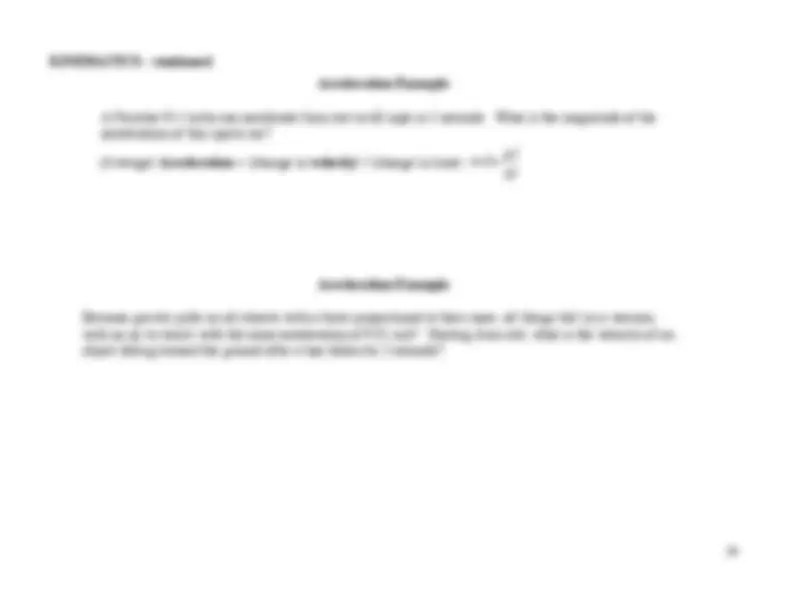







Study with the several resources on Docsity

Earn points by helping other students or get them with a premium plan


Prepare for your exams
Study with the several resources on Docsity

Earn points to download
Earn points by helping other students or get them with a premium plan
Community
Ask the community for help and clear up your study doubts
Discover the best universities in your country according to Docsity users
Free resources
Download our free guides on studying techniques, anxiety management strategies, and thesis advice from Docsity tutors
An introduction to scalars and vectors in physics, focusing on the concepts of distance, speed, and velocity. It covers the differences between scalars and vectors, and explains how to calculate average speed and velocity. Examples are included to illustrate the concepts.
Typology: Study notes
1 / 9

This page cannot be seen from the preview
Don't miss anything!






Another popular convention is to use bolded variables to represent vectors and normal text for scalars. Examples of a vector include force ( F ) and momentum ( p ). Examples of a scalar include energy (E), mass (m), and time (t). Because scalars contain no directional information, they are added just like normal numbers. Vectors, however, are added using special rules which we may cover later. 1.4 Distance, Speed, and Velocity Scalars and Vectors In physics, a vector is a quantity that consists of a magnitude (strength) and a direction. A scalar is a quantity that consists of just a magnitude. This difference might seem slight, but the importance of understanding this difference will be shown shortly. Mathematically, a vector is distinguished from a scalar buy the use of a few conventions. The most popular is the use of an arrow above a variable. Examples of a scalar include energy (E), mass (m), and time (t). Examples of a vector include force ( ) and momentum ( ). !
!
p
As we begin our look at introductory mechanics (the study of motion), we will start by approaching problems using kinematics. Kinematics deals with the motion of an object, but without worrying about that object’s mass or the forces acting on the object in question. Distance and Displacement
∆ is a symbol for the change in a quantity and is always (final – initial).
x " t
Speed Example My house was 1.25 miles away from Duquesne University. On a good day, it took me 1/4 of an hour to walk to the university. On a lazy day, it took me 20 minutes to walk to the university. What was my average speed (in miles per hour) in each case? Note: 1/4 = 0.25, 20 minutes = 1/3 of an hour, and 1/3 = 0.333. Average speed = (change in distance) / (change in time) = Good day: Lazy day: ! " x " t
Instantaneous Speed & Velocity Instantaneous speed or velocity of an object is, not surprisingly, the speed or velocity of an object at a given instant. Normally in physics this is found using calculus. I’ll show a “visual” example a bit later.
Acceleration Acceleration, or more specifically the average acceleration, is a change in velocity over a change in time. Because acceleration involves velocity, acceleration is a vector. The units of acceleration are length / time^2 (m/s^2 in this class). Any object that changes its direction, regardless of a change in speed, is accelerating. !
a =
v
(Average) Acceleration = (change in velocity ) / (change in time)